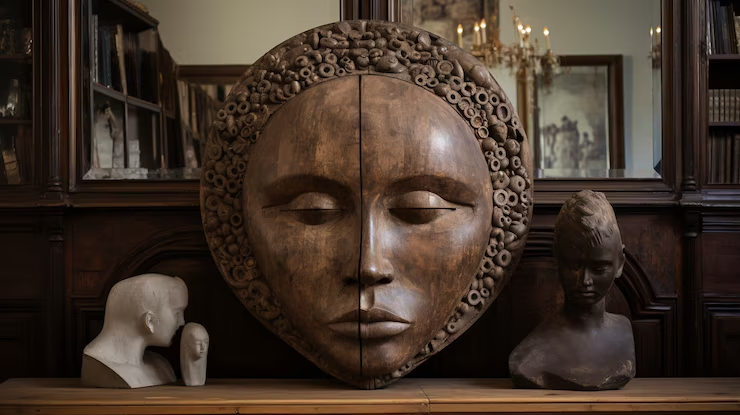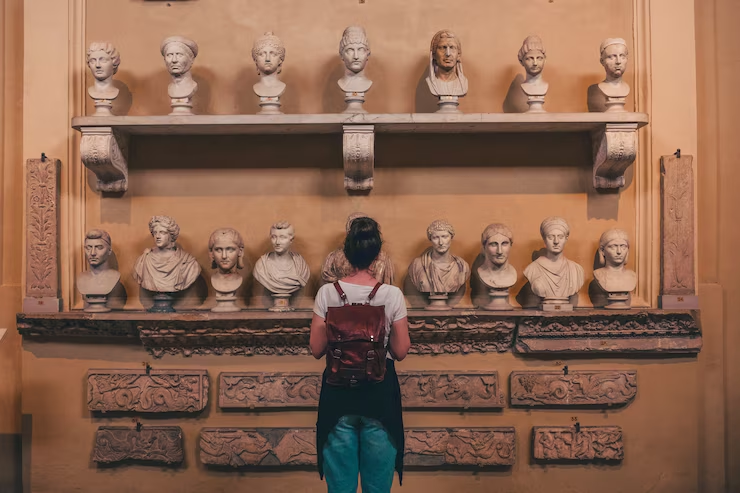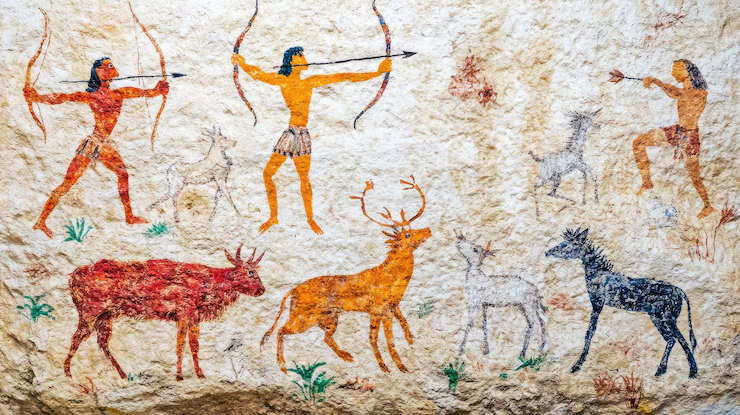Throughout history, humanity has expressed itself through artistic creations that speak to culture, emotion, and identity. Among these, ancient artz hold a special place. They are more than just drawings on walls or carvings in stone. They represent the soul of early civilizations and reveal how our ancestors viewed the world.
In this article, we’ll explore the origins, development, and global legacy of ancient artz. You’ll gain a deeper appreciation for their cultural importance and lasting influence.
What Are Ancient Artz?
Defining Ancient Artz in Historical Context
Ancient artz refer to the visual expressions created by early civilizations across different continents. These include paintings, sculptures, pottery, metalwork, textiles, and architectural designs. Each piece tells a story. Whether carved into stone or painted on cave walls, these works carried spiritual, political, or social meaning.
Why Ancient Artz Matter Today
The value of ancient artz goes beyond aesthetics. They offer insights into lost languages, forgotten rituals, and extinct societies. Moreover, they continue to influence modern design, fashion, and even storytelling. As we explore them, we gain a clearer sense of who we are and where we come from.
Ancient Artz in Mesopotamia: The Cradle of Civilization
Artistic Innovations of the Sumerians and Babylonians
In ancient Mesopotamia, civilizations such as the Sumerians, Akkadians, Babylonians, and Assyrians flourished. They introduced some of the earliest forms of writing and visual art. Clay tablets with cuneiform writing, cylinder seals, and carved reliefs were common.
Sumerian ziggurats, for example, were both religious centers and artistic landmarks. The Babylonians, on the other hand, crafted the famous Ishtar Gate, a dazzling structure covered with blue-glazed bricks and animal motifs.
Legacy and Impact on Modern Society
The artistic achievements of Mesopotamia influenced later civilizations, particularly in the development of architectural symmetry and storytelling in visuals. Today, museums around the world preserve Mesopotamian art to educate future generations.
Ancient Artz in Egypt: Symbols of Eternity
Hieroglyphics, Tombs, and Monumental Sculptures
Egyptian art is known for its iconic style, which remained consistent for over three millennia. From the Great Sphinx of Giza to the intricate murals inside the pyramids, ancient artz in Egypt focused heavily on the afterlife.
Pharaohs commissioned grand tombs adorned with hieroglyphics, frescoes, and sculptures. These artworks were not just decorative; they served religious purposes, guiding the soul in the afterlife.
Modern Influence of Egyptian Art
Modern fashion, film, and jewelry continue to borrow from ancient Egyptian motifs. From Cleopatra-inspired eye makeup to pyramid tattoos, the style remains recognizable and admired globally.
Ancient Artz in India: Spiritual and Symbolic Expression
Religious Themes in Ancient Indian Artz
Indian ancient artz are deeply tied to spirituality. Temples, caves, and ancient manuscripts feature detailed carvings, vibrant murals, and symbolic figures. The Ajanta and Ellora caves, for instance, contain Buddhist murals that depict stories of rebirth, karma, and enlightenment.
In addition, early Hindu temples were adorned with sculptures of gods and goddesses in dynamic postures, reflecting cosmic principles and divine narratives.
How Indian Artz Inspired the East and West
The intricate designs of Indian ancient artz spread across Southeast Asia through trade and religious exchange. Even in the West, elements of Indian style influenced 19th-century romantic art and modern yoga culture.
Ancient Artz in China: Harmony and Tradition
Early Chinese Pottery, Calligraphy, and Bronze Work
In ancient China, art was closely linked to philosophy and harmony with nature. Pottery from the Neolithic period reveals simple yet functional designs. Later, during the Shang and Zhou dynasties, bronze vessels were used for ritual purposes and featured intricate animal motifs.
Calligraphy also emerged as a highly respected form of art. Each brushstroke had meaning, connecting the artist to the universe and moral order.
Enduring Influence on East Asian Culture
Ancient Chinese artz shaped Korean, Japanese, and Vietnamese aesthetics. Elements like ink painting, porcelain work, and paper lanterns remain popular, even in today’s minimalist art trends.
Ancient Artz in Greece and Rome: Foundations of Western Art
Sculptures, Frescoes, and Idealism
Greek and Roman ancient artz were focused on human anatomy, proportion, and perspective. Greeks idealized the human form through sculptures like the Discobolus and Venus de Milo. Romans later added realism and expanded into large-scale frescoes and public art.
Architecture also thrived. Structures like the Parthenon and Colosseum display balance, order, and power.
Legacy in Western Civilization
Western art education often begins with the study of Greek and Roman models. Their ideals shaped Renaissance art, neoclassicism, and even Hollywood set designs.
Ancient Artz in the Americas: Mysticism and Geometry
Mayan, Aztec, and Incan Contributions
In the Americas, ancient artz were rich in symbolism and astronomical alignment. The Mayans created detailed stelae and painted codices. Aztecs built colossal stone temples and used color to represent cosmology. The Incas, known for their masonry, built intricate city layouts like Machu Picchu.
Influence on Contemporary Latin American Art
Today, artists across Latin America pay tribute to ancient themes through murals, crafts, and fashion. These designs serve as reminders of pre-colonial identity and resilience.
African Ancient Artz: Rhythm, Ritual, and Identity
Masks, Textiles, and Sculpture
Africa’s ancient artz are incredibly diverse, reflecting a wide range of tribal cultures. Wooden masks, bronze sculptures, and woven textiles were often used in ceremonies, storytelling, and rites of passage.
The Nok civilization of Nigeria produced terracotta statues as early as 500 BC, showcasing artistic innovation.
Lasting Legacy in Modern Design
African patterns, symbols, and styles have made their way into modern art, fashion, and home décor. From bold color palettes to tribal prints, the influence of African ancient artz continues to grow.
The Common Threads in Ancient Artz
Shared Themes and Universal Values
Despite cultural differences, many ancient artz share similar themes—nature, divinity, power, and community. These commonalities reflect a shared human desire to express and preserve values, stories, and emotions.
Techniques Passed Through Generations
From pigment mixing to carving tools, many ancient techniques are still used today. In fact, some artists actively study these methods to keep traditions alive and honor ancestral skills.
Preservation of Ancient Artz in the Modern Age
Museums and Archaeological Efforts
Institutions like The British Museum, The Louvre, and The Met display ancient artz from around the globe. Additionally, archaeologists and historians work tirelessly to protect artifacts from decay, theft, and political conflict.
Technology also plays a role. 3D scanning, digital archiving, and virtual reality have opened new ways to experience ancient artz without damaging the originals.
The Role of Education and Cultural Awareness
Raising awareness about ancient artz in schools, documentaries, and exhibitions helps preserve them for future generations. Public engagement ensures that these cultural treasures are not forgotten.
How Ancient Artz Influence Today’s Creative Fields
Design, Fashion, and Architecture
Modern architects often incorporate ancient principles of balance and harmony. Designers draw on ancient motifs to create patterns that feel timeless. Fashion brands, too, frequently revisit historic themes in their collections.
Film, Literature, and Digital Media
Blockbuster movies like The Mummy, Gladiator, and Troy showcase the beauty of ancient civilizations. Writers and game developers use ancient stories and artz as inspiration for fantasy worlds, illustrating their relevance even in digital media.
Why Ancient Artz Still Matter
Reconnecting with Our Roots
Understanding ancient artz helps us reconnect with our shared past. It teaches respect for different cultures and reveals how creativity has always been a part of the human experience.
Cultural Identity and Global Unity
By appreciating ancient artz, we promote cultural identity while also finding unity in our similarities. These creations remind us that art is a universal language—one that transcends time and borders.
Final Thoughts
The origins and legacy of ancient artz stretch across time, space, and culture. From the ziggurats of Mesopotamia to the temples of India, from the pyramids of Egypt to the lost cities of the Americas, each piece speaks volumes. Together, they form a global mosaic of creativity, spirituality, and human evolution.
As we move further into the digital age, it becomes even more important to preserve, study, and celebrate ancient artz. Not only do they help us understand our past, but they also inspire our future.




